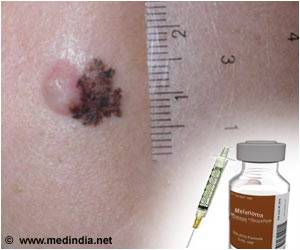Melanoma strikes roughly 1 in 50 people in the general population, Dr. Brewer says.

The odds of getting melanoma are up to 2.5 times higher in people who have received a transplant or who have lymphoma, and melanoma also is likelier to be fatal in those patients, he adds. Patients who have the form of lymphoma called chronic lymphocytic leukemia and develop melanoma are 2.8 times more likely to die from metastatic melanoma, in which the cancer has spread from the skin to other parts of the body, such as internal organs.
The take-home message, Dr. Brewer says: If melanoma is found earlier in such patients, they will likely have better chances of survival. Melanoma can develop anywhere on the body. The first signs are often a change in a mole's appearance or the development of a new pigmented or unusual-looking growth.
"How you catch melanoma earlier is to be very aware of your skin," Dr. Brewer says. "These patients with immunosuppression should be looking themselves over head-to-toe once a month, they should be seeing a dermatologist once or twice a year, and if they have a lot of other risk factors, maybe more often than that."
Dr. Brewer also advises using sunscreen, trying to avoid the sun and steering clear of tanning beds. The melanoma risk is so high in immunosuppressed patients that they should use sunscreen not only every day, but "almost as often as you brush your teeth," he says.
Source-Eurekalert










